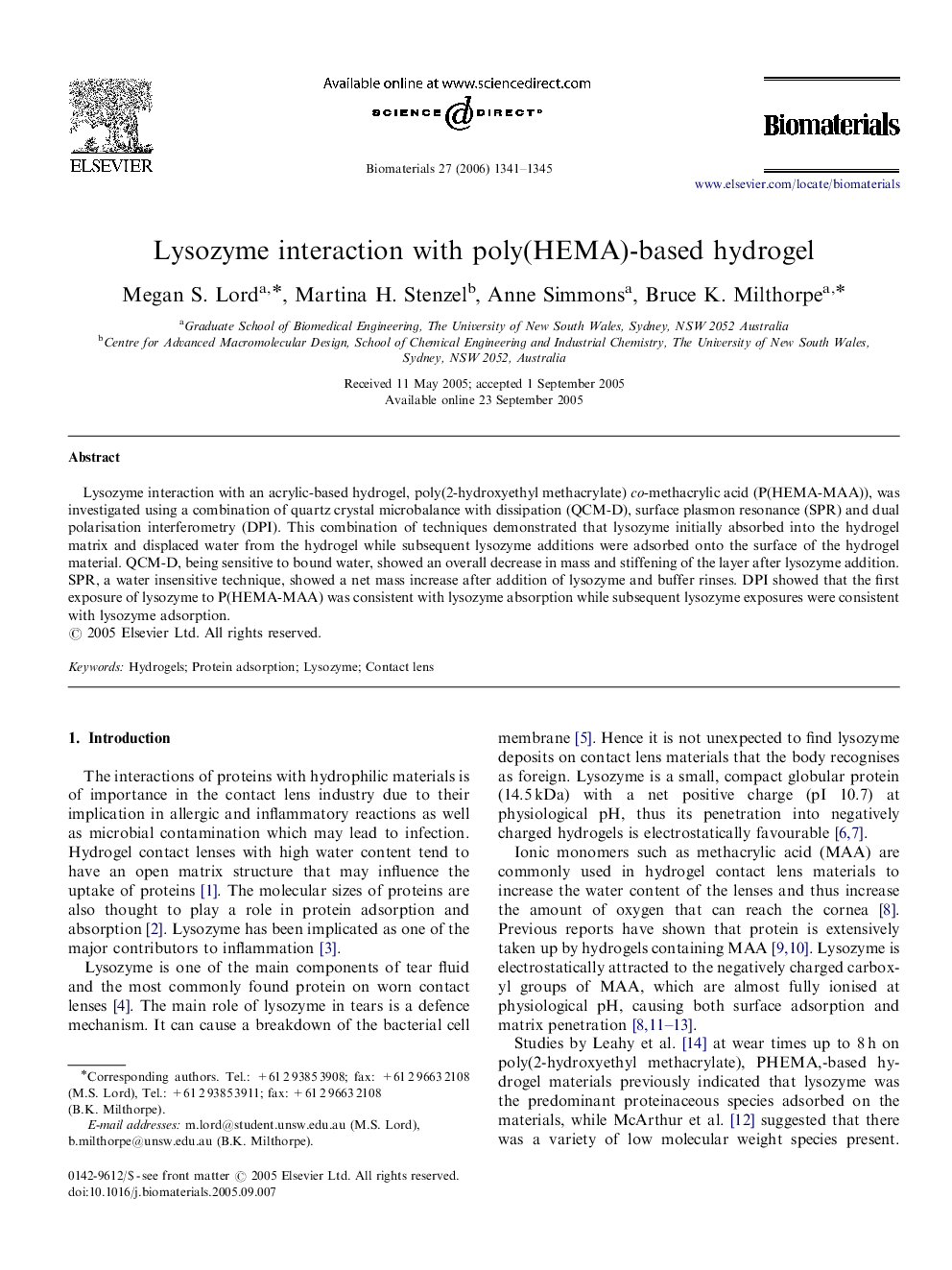| Article ID | Journal | Published Year | Pages | File Type |
|---|---|---|---|---|
| 11543 | Biomaterials | 2006 | 5 Pages |
Lysozyme interaction with an acrylic-based hydrogel, poly(2-hydroxyethyl methacrylate) co-methacrylic acid (P(HEMA-MAA)), was investigated using a combination of quartz crystal microbalance with dissipation (QCM-D), surface plasmon resonance (SPR) and dual polarisation interferometry (DPI). This combination of techniques demonstrated that lysozyme initially absorbed into the hydrogel matrix and displaced water from the hydrogel while subsequent lysozyme additions were adsorbed onto the surface of the hydrogel material. QCM-D, being sensitive to bound water, showed an overall decrease in mass and stiffening of the layer after lysozyme addition. SPR, a water insensitive technique, showed a net mass increase after addition of lysozyme and buffer rinses. DPI showed that the first exposure of lysozyme to P(HEMA-MAA) was consistent with lysozyme absorption while subsequent lysozyme exposures were consistent with lysozyme adsorption.
